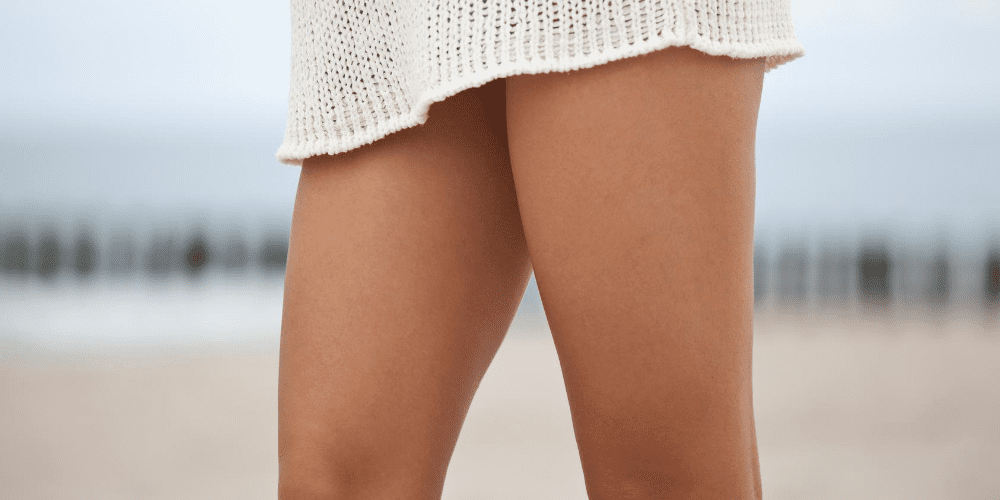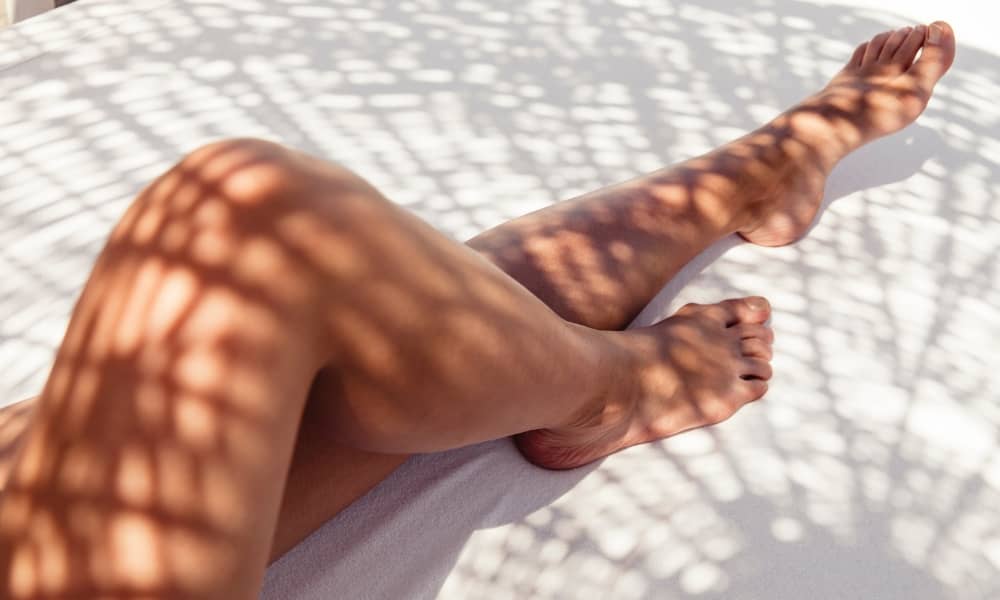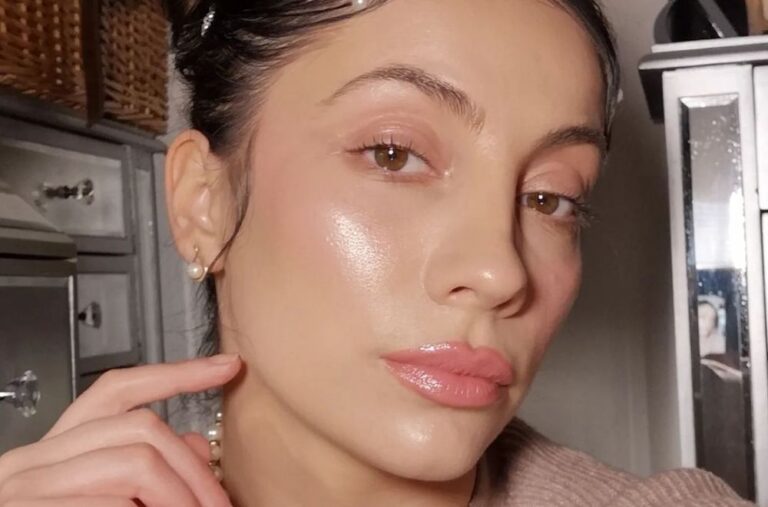Out of sight, out of mind can be a common approach when clothes shroud our limbs through the colder months. Just like bears go into hibernation for winter, so too does our attention and care for anywhere other than our faces.
How lovely it is, then, to peel off the layers and feel the warmth of the sun on our skin again. If you’re like us, taking nothing away from enjoying those mood-boosting moments, you might have entertained a passing thought about the flaky, scaly patches or newly visible veins now on show.
Popping into the bathroom and emerging with lotion on your legs is the easiest solution. Yet if you’ve seen a spot or mole that looks suspicious, or those veins are more prominent, painful or itchy, it’s important to have them checked by your GP, or better yet, a skin specialist.
Vein Treatments
Whether your concern is aesthetic or medical, addressing vein issues in your legs is generally straightforward and non-surgical treatments are used in the majority of cases. The most common issues are spider veins or varicose veins. Visible networks of spider veins appear as red or blue coloured ‘tree branches’ or ‘spiderwebs’ on the surface of the skin. They can be caused by fragile veins from hormone changes, exposure to the sun, or injuries, but in some cases they can be caused by a backflow of pressure from underlying varicose veins, which may not be visible on the skin surface.
Varicose veins are always caused by pressure in the vessels that return blood from the feet and legs back up to the heart. The familiar lumpy, wiggly shaped veins are thanks to weak or damaged vein walls and valves. Yet they can also be caused by other things like increased pressure on your veins as a result of standing for long periods, pregnancy and in some cases, deep vein thrombosis (DVT) or other obstructions.
“Vein blood is old blood with very little oxygen and nutrition left in it,” explains Dr Steve Benson, Skin Institute’s Varicose Veins Lead Partner. “This blood returns from the legs because of one way, non-return valves throughout the legs. If these valves fail, the old blood pools back downhill in the legs.”
Dr Benson says that this causes symptoms in three main layers.
“In the deeper layers it leads to achy, heavy legs as the day progresses, and on to restless legs and cramp at night. During the middle layer it leads to bulging varicose veins that may not have many symptoms but are at increased risk of acute clotting.
“In the superficial layer the old blood pools in the skin causing visible skin veins and staining, especially in the lower legs, which can be bluey, brown, red or black in colour. The skin becomes itchy, thin and can break down to a leg ulcer.”
Dr Benson points out that even with superficial issues, there may be more severe underlying issues without visible lumps and bumps, so a full ultrasound that gives a detailed map of your veins is key to understand clearly what’s going on and
provide a plan of action.
At Skin Institute, simple spider veins are generally treated with Sclerotherapy, injecting a special solution into the veins, damaging, shrinking, collapsing and dissolving them.
Treatment of varicose veins generally involves Ultrasound Guided Sclerotherapy which allows targeted treatment and/or Endovenous Ablation that involves using heat energy generated by radio frequency waves to seal off the affected veins.
This procedure is performed under local anesthetic, meaning you can ‘walk in and walk’ out after it is done.
Compression stockings and no flying are required for 2-4 weeks.

Smooth moves
Surface dryness and that crepey dehydrated texture are easier to vanquish yet still require consideration. Gentle exfoliation to encourage skin cell turnover is a key step, but don’t be tempted to go overboard with a scrub.
“Exfoliation twice a week on our bodies is enough,” says Vanessa Feehan-Meldrum, Sothys National Technical Trainer.
“We do not need to do this every day – this could increase dryness and dehydration.”
One lesser-known product Feehan- Meldrum suggests considering is a body serum. With concentrated ingredients they deliver more effective results, going deeper into skin. Offering ‘extra reinforcement’ all over, she suggests applying before a body moisturiser.
“Just like facial serums they can be used to target specific concerns, whether that’s sun damage, toning and smoothing skin or softening of dry skin.”
Then, it’s about applying a body moisturiser that will deeply nourish skin and hold on to moisture like those with added ceramides, or occlusive natural ingredients like cocoa butter and olive-derived squalane.
Targeting cellulite
When it comes to cellulite, there’s not a lot of development on minimising its appearance because it is notoriously stubborn and difficult to treat.
Caused by fibrous strands pushing between the skin and muscle trapping the fat cells into little pockets, it is unlikely to be budged by any cream. There are a number of in-clinic treatments like Cooltech, but they work by reducing fat, not the strands that cause the dimpling.
These days much of the focus is on improving skin quality by toning, tightening and smoothing with daily dry body brushing and lymphatic massage, designed to increase circulation and drain any water from the tissue. These approaches use long sweeping strokes towards the heart to stimulate the lymphatic system. Body brushing also gives skin a gentle surface exfoliation.
For saggy or crinkly areas above your knees, there is growing popularity in the use of Profhilo Body, an injectable ‘beneath the skin’ hyaluronic acid moisturising treatment that also stimulates the production of collagen and elastin for a smoother look.
How to treat ‘Strawberry legs’
‘Strawberry legs’ is a term used to describe the appearance of small, dark dots or spots on the skin’s surface, which can resemble the seeds on the skin of a strawberry. These dots or spots are typically the result of hyperpigmentation when hair follicles or pores become clogged with oil, dead skin cells, and sometimes bacteria.
To improve their appearance, you can try using a body wash or lotion with exfoliating alpha hydroxy acids (AHAs) or beta hydroxy acids (BHAs), shave with a sharp, new razor, and moisturise well afterwards.
Laser hair removal is also a good option as it permanently removes the hair at the root.
If you’re applying a self-tanning product, exfoliate and shave 24 hours before applying so the colour doesn’t gather in pores.
If the problem worsens, you should see a doctor or dermatologist.
Quick solutions
Dry oils leave a silky, smooth texture as well as a beautiful radiance that makes skin appear to glow with good health.
For a quick touch of colour that washes away, try a tinted body moisturiser or a product like Sally Hansen Airbrush Legs spray that acts like a foundation, minimising pigmentation, bruises and veins and gives a flawless appearance.







